|
BAYFIELD, WISCONSINWRITTEN BY HEIDI SIEFKAS Located in Northern Wisconsin on Lake Superior is the quaint, coastal town of Bayfield. Although its population is slightly under six hundred residents, its list of attractions and accolades is robust: proudly the berry capital of the Dairy State as well as the gateway to the Apostle Islands. Many say that Bayfield and its surrounding area are where land meets the sky with Lake Superior providing a beautiful and ever-changing mirror. Whether you choose to charter your own boat, paddle a kayak, or cruise with one of the many tour operators, no trip to Bayfield is complete without time on the largest of the Great Lakes. Here, we share Bayfield attractions on lake and land. Witness the spectacular fall color change in Northern Wisconsin. The Apostle Islands are best explored via kayak, sailboat, or tour. The harvest around Bayfield is bountiful: apples, berries, flowers, and more. Bayfield’s Harbor—a boater’s paradise—at sunset. Bring a chair or blanket to many outdoor entertainment events along the harbor. Lake Superior and the Apostle Islands.By surface area, Lake Superior is the largest freshwater lake in the world measuring 31,700 square miles. To put that into perspective, that’s nearly the size of Maine. The Ojibwe first noted its size by naming it Gitche Gumee, which loosely translates to big sea or huge water. If that sounds familiar, you might be recalling Gitche Gumee from Henry Wadsworth Longfellow’s famous poem “Hiawatha.” With the sheer size and area of Lake Superior, weather patterns are powerful and can change quickly. So, it’s a good rule of thumb to listen to the locals, dress appropriately, use cold-water gear, and be prepared to weather out a storm. Because of the challenging conditions and the neighboring Apostle Islands, this designated National Lakeshore (protected public lands operated by the National Park Service) is home to the largest collection of historic lighthouse and light towers in the United States. With windswept beaches and sandstone cliffs spanning twenty-one islands, the Apostle Islands is a treasure of the Upper Midwest. Adventurers may kayak along the shore and into sea caves, while observers have their choice of large charter boat tours ranging from half-day to sunset cruises. All tours are subject to weather conditions. Madeline Island.For those looking for a shorter boat ride and perhaps a bite to eat or a concert, it’s just a hop, skip, and ferry ride to Madeline Island. Welcoming cars and pedestrians, the twenty-five-minute ferry ride runs from 7:00 a.m. to evening and changes seasonally. Once on the island, grab a bite to eat (we love Farmhouse Kitchen and Inn), do some souvenir shopping, or take in a live performance with Madeline Island Chamber Music. Repeat visitors and locals recommend venturing out of town and spending the day hiking through Big Bay State Park to experience views of sandstone sea caves, bogs, and hemlock forests. Foodie Finds.When adventuring in Bayfield, indulge in bites, sweets, and libations. Try some lake-to-table and farm-to-table meals at eateries for local white fish, lake salmon, and smoked trout. Near the harbor in Bayfield, there are numerous options from casual, like Manypenny Bistro, to fine dining like the Bayfield Inn Restaurant, including cozy locales to warm up with a frothy coffee or satiate your sweet tooth with local ice cream. A summer and fall favorite activity of locals and visitors alike is exploring the Fruit Loop where you can pick your own strawberries, cherries, blueberries, and apples. (If you don’t want to do the picking, you can purchase preharvested berries and apples, too.) Mother Nature surely pulled out all the stops with Bayfield and Lake Superior. Its inspirational backdrop provides us all with sweet and savory flavors from the lake, farms, and orchards. Come hungry and with a thirst for adventure. travel tips.When to Go:
July and August are the warmest with the most opportunities for harvesting berries. Late September and October provide beautiful fall colors, festivals, and apple-orchard experiences. Must-Do Activities: Take the ferry to Madeline Island. Charter a cruise or kayak tour of the Apostle Islands. Eat your way around the Fruit Loop. Drive up scenic Highway 13 for fall colors. Catch a concert at Bayfield’s Big Top Chautauqua. Locavore Favorites: White fish (not fishy, great prepared multiple ways) Smoked lake trout and salmon Sweet treats featuring berries or apples Ice cream and cheese curds Hard cider Photography provided by JamesBrey/E+/Getty Images, timothy mattimore/iStock/Getty Images Plus, Bayfield Chamber and Visitor Bureau. Serves 6
In a bowl, combine the raspberries, sugar, and lemon juice. Let macerate for 30 minutes to tenderize the fruit. Mash berries with a fork or puree in a blender to desired consistency. Keep refrigerated until used.
In a bowl, combine the whole milk and gelatin. Set aside and let bloom for 5 minutes In a saucepan, combine heavy cream, sugar, and vanilla extract, and place over low heat. Stirring frequently, slowly bring up the temperature of the milk until it begins to bubble around the edges of the saucepan, then remove from heat. While stirring, slowly add the bloomed gelatin to the cooked cream until fully incorporated. Divide the mixture among the ramekins and refrigerate until set. Serve panna cotta in ramekins or remove and serve on a plate topped with raspberries. To remove panna cotta from ramekin, set ramekin in warm-water bath for a few seconds, just enough to release it from the sides. Remove from water bath, place a plate on top and flip over the ramekin to turn out the panna cotta onto the plate. Serve chilled, garnish with lemon zest, fresh mint, and whole raspberries if desired. RECIPE AND PHOTOGRAPH BY KRISTEL MATOUSEK WWW.PHOTORICALFOOD.COM Serves 6Macerated strawberries
Place cut biscuits on a parchment-lined baking sheet. Brush biscuit tops and sides with milk and sprinkle with raw sugar. Place biscuits in oven to bake for 20 minutes, or until they begin to brown. Let cool to touch before serving.
As biscuits cool, prepare the whipped cream. Whip the heavy cream with a stand or hand mixer. As cream thickens, add vanilla extract, then slowly add the powdered sugar to stabilize. Whip to desired consistency. If overwhipped, whole milk can be stirred in as needed to thin and remove any clumps. Serve biscuits whole or cut in half. Top with whipped cream and strawberries. RECIPE AND PHOTOGRAPH BY KRISTEL MATOUSEK WWW.PHOTORICALFOOD.COM A Bay Area Bedroom Gets a Dreamy MakeoverWRITTEN BY VICTORIA HITTNER / PHOTOGRAPHY BY YONI SAMBOMost couples spend the day after their wedding on a honeymoon. Sacha and Melissa Leclair spent it redecorating their home.“After showcasing our space online, friends started asking us for help,” says Sacha Leclair. Pro bono work led to paying clients and eventually, the establishment of Leclair Decor, the couple’s Ottawa-based design firm that serves North America. With a particular focus in new builds and high-end remodels, Sacha and Melissa were the ideal team for this San Francisco Bay Area refresh. The homeowners were a young family looking to add both personality and functionality to their space—basically, says Leclair, “make it feel like a home.” It was imperative the redesign fit the family’s active lifestyle while leaving room for growth.
The sandy, neutral palette is a nod to the project’s location, coupled with easy-to-care-for natural fibers and textiles befitting a beachy abode. Wool, for example, pops up frequently throughout the home. “It’s the most luxurious material,” explains the designer, “[and] it’s natural and offers tons of textural interest.” “We wanted to highlight the coastal aesthetic without going too far in that direction,” notes Leclair. “To achieve that, we juxtaposed those coastal touches with clean, modern lines to create a balanced, inviting space.” And while the Leclair team’s work can be seen throughout the entire house, the primary bedroom suite showcases the best of their vision: a cozy, sophisticated retreat with room to relax and recoup. The home is shaped like a U, curled around a central courtyard that links the primary bedroom to both the dining room and family room. Existing architectural elements like vaulted ceilings and expansive windows begged for an airy, organic aesthetic. In the primary suite, this meant maximizing the view and placement of the French doors leading to the courtyard. The designers strategically placed a seating area looking outside, providing the perfect spot to savor a morning coffee or sip a nightcap. “We love creating different zones with furniture to really maximize the use of space, like the seating area that floats at the foot of the bed/bench,” explains Leclair. “The key to making that work is to align your zones [with] one another.” The Leclairs created that balance by centering the seating area with both the bed and entry door. An oversize wool rug from the couple’s own retailer, LD Shoppe, visually links the sleeping and seating areas together. Focal pieces like the made-to-order headboard and frame from Restoration Hardware and textured-wood side table from LD Shoppe help anchor the individual areas. “Everything in our projects is hand-selected by our design team and comes from all over the world,” says Leclair. Many of the standout pieces featured in this Bay Area design, like the large area rug, came from their own inventory. The eye-catching Mollino chandelier suspended between the sleeping and seating areas—a team favorite “for its plaster, textured finish and soft glow”—is one such piece. “Lighting is a huge part of all our designs,” notes Leclair. “Our focus is on layering lighting to suit a space’s many functions.” With plenty of natural light, the designers needed few fixtures to brighten the bedroom. The room’s earthy tones keep the space feeling airy, while greenery ushers the serenity of the courtyard beyond the French doors. To prevent plants from overwhelming a room, the designer recommends mixing a variety of natural elements like dried branches and flowers, in addition to fresh sprigs, like the seeded Eucalyptus seen on the curved side table. A shiplap wall adds depth and dimension without compromising the urban, beachy feel. The space’s cool aesthetic is carried behind the wall and into the en suite bathroom, where a black-and-white wallpaper—Enso Waves by Eijffinger—adds a splash of coastal sophistication. Modern prints and metallic finishes complement the mirror and artwork found in the primary room. It’s that careful attention to detail that makes the suite feel elevated, yet practical enough for everyday use and enjoyment. Ultimately, Leclair and his team created a space that became home. “We want our clients to feel inspired every time they walk into their door,” he says. “Everyone’s home should be a space of calm, peace, and rejuvenation, and a beautifully designed, harmonious space can help achieve that feeling.” FLORENCE, ITALYWRITTEN BY HEIDI SIEFKASThe capital of Italy’s Tuscany region, Florence (Firenze) is home to many masterpieces of Renaissance art and architecture, but also the best of today’s culinary creations. If you desire a dose of culture, history, and edible works of art, Florence is an ideal vacation locale—and the dream of many. Although you could do Florence in a weekend, you would only scratch the surface. We suggest a week, spending the majority of the time in the city and a day or two touring the Tuscan countryside for wine tastings and the postcard-worthy cities of San Gimignano and Siena. Get ready to embark on an Italian adventure of food, art, architecture, shopping, and beautiful vistas—all in one spot. Andiamo! Exploring the narrow streets of Florence is like strolling through pages of a history book. Il Duomo is the focal point for navigating Florence and a highlight of most visits; its terra-cotta-tiled dome is spectacular, but don’t forget to tour inside to witness the Renaissance masterpiece on the ceiling. Enjoy la dolce vita by sampling local cured meats and artisanal cheeses paired with a Tuscan vino. Florence is best discovered via a small moped, bicycle, or on foot. City Center. Without a doubt, the top destination in Florence is the Santa Maria del Fiore or il Duomo; the cathedral is located in the city center—an UNESCO World Heritage Site. This terra-cotta–tiled dome cathedral is one of the largest in the world, bowing to St. Peter’s Basilica in Vatican City. The construction of il Duomo lasted from 1420 to 1436, and today the engineering feat is admired by visitors and locals alike. The cathedral’s creation included valuable contributions from the Renaissance’s most prominent artists—Michelangelo, Donatello, and others. Entrance into the cathedral is free, but if you want to tour Brunelleschi’s Dome, Giotto’s Bell Tower, the Baptistery of San Giovanni, and the Opera del Duomo Museum, you’ll need tickets. For the adventurous, il Duomo presents a challenge: climbing to the top. It is a tight spiral staircase, but the views are worth every step. Plus, you can reward yourself with tasty Tuscan delights when you return streetside. Fine Dining. If Italy is known for one thing, it’s food. Some traditional dishes not to skip are ribollita (a hearty bread, bean, and greens soup); bistecca alla Fiorentina (typically served rare); and lampredotto (offal, yet delicious, sandwich). You can pair all of these with the local, bold red wine, Brunello di Montalcino. A great stop for any foodie and even the pickiest eater is the Mercato Centrale. This market is a combination of food stands with local cheeses, olives, oils, and breads as well as restaurants with plenty of room to sit and enjoy multiple courses. Save room for exceptional desserts, such as Florentine chocolate or zuccotto (a chilled, dome-shaped dessert similar to tiramisu). Jewel of the Renaissance.Florence is an art lover’s paradisical visit. Although there are masterpieces of art around every corner and in every piazza, it would be a shame to miss Botticelli’s “Birth of Venus” and da Vinci’s “Annunciation” at the Uffizi Gallery. Those, along with Michelangelo’s “David” in the Galleria dell’Accademia are the classics trifecta in the city of lilies. Other must-sees, particularly for shutterbugs, are il Porcellino—a bronze wild boar statue that promises good luck for those who rub its snout—and Piazzale Michelangelo for the best panoramic view of it all: il Duomo, Ponte Vecchio (medieval covered bridge), and the Arno River. If you love to shop or just want to pick up a few souvenirs for you or someone special, Florence is famous for its leather craftsmanship (think gloves, jackets, handbags), gold jewelry, and pottery. Head to Mercato Nuovo/Mercato del Porcellino (an open-air market where you can also find the bronze boar) for one-stop souvenir shopping. Florence has a way of captivating your senses. From the aroma and taste of a glass of Tuscan Brunello to the intricate details of “Birth of Venus,” Florence rekindles an appreciation of natural and manmade beauty. Experience la dolce vita—the sweet life—with a trip to Firenze. travel tips.When to Go:
May through September are popular, but also busy. Some savvy travelers suggest shoulder season (April or October) when there are fewer tourists and mild temperatures. How to Get There: Fly into Rome (FCO) and take the fast train (for 1.5 hours), or fly into Pisa (PSA) and drive (for approximately 1 hour). What to Try: Take an authentic Tuscan cooking class Climb to the top of Il Duomo Touch the snout of Il Porcellino Book a wine tasting in Tuscany Visit neighboring towns such as Siena and San Gimignano Serves 4
Toss arugula in the dressing to coat, using as much or as little as you desire. Sprinkle with Parmesan cheese and toss again. On a large plate, alternately layer arugula with remaining ingredients. Garnish with additional Parmesan and black pepper, and serve. Keep dressing refrigerated after use. Can be kept for 1 week under refrigeration. Some natural separation may occur over time but can be re-emulsified if necessary. RECIPE AND PHOTOGRAPH BY KRISTEL MATOUSEK WWW.PHOTORICALFOOD.COM Serves 4
Using a blender, puree the roasted red bell pepper with the tomato puree. Add bell pepper and tomato puree to the pot to deglaze. Bring to a simmer and allow it to reduce and darken slightly before adding the stock. Over the stock pot, strain off the juice from the canned clams, combining it with the red pepper and tomato puree. Retain the clams for later use. Bring to a boil, then reduce to a simmer. Continue to cook uncovered until the potato is fully cooked. Add the clams in shell to the pot and cook until the clams open on their own. Remove from heat and stir in the retained clams from the can. Taste and season with additional salt and pepper as needed. Garnish with fresh fennel fronds, and serve hot. RECIPE AND PHOTOGRAPH BY KRISTEL MATOUSEK WWW.PHOTORICALFOOD.COM A California Remodel Inspired by Beach Vibes WRITTEN BY RONDA SWANEY / PHOTOGRAPHY BY LANE J DITTOEWhen this project started, the residence was a midcentury beach home that was minimally updated by previous owners—but the home’s new owner had grander plans. “He wanted this California-cool, surf-shack feel, but more elevated,” says Mindy Gayer, who operates her eponymous design firm in Orange County. Gayer draws design inspiration from the region where she works and lives. “Southern California living embodies incredible weather and that warmer feeling,” says Gayer. “We try to infuse that in our homes with a light palette and other design choices that reflect the sunshiny disposition of California in general.” That sensibility matched what this project called for. “This client is very creative. When he came to us, he had a defined vision of what he loved. This wasn’t his first remodel project, so he knows what the process is like. He was willing to invest in the things that would deliver character and interest,” she says. Many of Gayer’s clients, including this one, enjoy what she calls an indoor-outdoor lifestyle that embraces open-air activities like hiking and surfing, and carries that same aesthetic inside. This home embodies the interplay between the indoors and outdoors. “We’re surrounded by so much natural beauty with a lot of our homes near the ocean, and with a lot of green landscaping. We try to incorporate those beautiful tones inspired by nature,” says Gayer. This client’s particular passions and hobbies also inspired the design. “Our client is a big ocean lover. He loves surfing and boating,” says Gayer. Various shades of blue appear throughout as a nod to the ocean waves and the clear sky above. The remodel plan kept in place several of the home’s original architectural features, including the wall of windows at the back of the house. “The challenge with so much natural light is to ensure the space doesn’t feel too exposed. We leaned into the fact that it’s a bright open space,” says Gayer. She intentionally chose materials that didn’t disrupt the eye from enjoying the outdoor views. Crisp-white paint and millwork embrace and amplify the light through clerestory windows. Lighter wood tones in the flooring and furniture are reminiscent of sand; a reminder that the beach is just a block away. Because so much of the outdoor space can be seen from the common living area, it feels like a natural extension of the home. “It was important to allow that outdoor space to be a room in and of itself and not feel like the interior was competing with it,” says Gayer. Interior design elements continue outdoors, including touches of the coastal-blue color palette, crisp-white paint, and light-wood furniture. Corrugated metal and galvanized light fixtures add to the maritime atmosphere, and ample seating entices family and friends to stay awhile. As the project progressed, the owner saw his creative vision for the inside of the home coming to life and wondered if the exterior would live up to the interior. “Updating exteriors can get costly, so they’re not always a top priority for clients,” says Gayer. Midway through the project, the client decided updating the exterior would be crucial to realizing its full potential. So, they lightened up the shingles by painting them a custom oatmeal hue. New house numbers and exterior lighting were also added, as well as new decking from the curbside to the front door. A landscape plan from Bridget Skinner, a local landscape architect, featured a new palette for all the plants and included grasses and succulents. “I am so glad our client wanted to update the exterior,” says Gayer. “We always want the exterior to speak to the interior. It should give a peek into what the inside is going to feel like. It added to the charm of the home.” And charm it has. Indoors and out, this beach home truly embodies California cool. remodel mindset.
Here, we share designer Mindy Gayer’s recommendations for questions to ask and answer before starting a remodel. Who’s on the design team? Besides the owner, teams can include designers, architects, landscapers, and so on. Know all the players and how they interact before you begin. What’s the budget and timeline? These two items go hand in hand. “If a client has a timeline in mind, that dictates the scope of work, as does budget,” says Gayer, adding don’t be shy about addressing them early on. This information allows the pros to help homeowners stretch and allocate dollars and resources appropriately. Who’s the lead? Choose wisely. Leads will be in charge of keeping the budget and timeline on track. They should be familiar with the process and understand how all the trades interact. Have you done this before? Remodels can be stressful. If you’re new to the process, it may be wise to hand off major tasks to the professionals.  “ Remember this: happy campers & hikers pack light. ” “Take a hike,” might be closely associated with an unkind dismissal, but there is something to be said for the suggestion. With people admittedly spending too much time on electronic devices and having a 24-7 “on” status, the world is experiencing high stress and insomnia. Taking a hike and immersing yourself in nature could be just what the doctor ordered.Hiking Is Healing.Many people connect to several devices every single day. When those devices don’t work correctly, what’s the first thing you do? Turn the device off. When you reboot a smartphone or tablet, it works better. The same can be true for your body. If you want to clear your mind, improve your physical health, or recharge your battery, you will find that hiking is a total mind, body, and soul healer. Getting outside, exploring nature, and being in the moment can all be done while hiking. Time outside is a powerful reset for your mental well-being. It’s proven that being in nature for just twenty minutes reduces stress hormones. In fact, just two hours a week in nature promotes good physical and mental health. A quick online search yields results for grief support groups centered around the activity. Grief hikes are aimed to get you out of a circle and into the wilderness to process your pain in a healthy way. Start Simple.Not all hikes are created equal. Day hikes allow you to return to the trailhead in one day. They can vary from easy to moderate and difficult based on terrain, distance, and elevation gain and loss. Horseshoe Bend in Arizona is a relatively flat trail and less than two miles roundtrip, but a whole lot of beauty is packed into each step. For those with above-average fitness and the right gear (see sidebar), Half Dome in Yosemite, California (fourteen to sixteen miles roundtrip) and Hanakapiai Falls (approximately eight miles roundtrip) on the Napali Coast of Kauai, Hawaii are both life-changing. For longer hikes, say anything above fifteen miles in a day, consider camping overnight. Although you break up the trek with rest, you also have additional weight with every step. Remember this: happy campers and hikers pack light. For multiday hikes, it is essential to test out your gear beforehand, have enough water and/or water treatment options, bring a first-aid kit, and notify someone at home of your plan. If fact, almost all long-distance hikers utilize hiking poles to help improve balance, reduce stress on knees, and increase speed. Long-haul hikes that are worthy of doing in their entirety or in sections are the Camino de Santiago (St. James’ Way) in Northern Spain or the Appalachian Trail (AT) in the Eastern United States. Leave the Roads.Leave the fast pace of the highway or the downtown traffic jams and take to the trails. Hiking is as easy or as challenging as you want it to be. However, hiking is certainly a gateway to getting more vitamin N (Nature). You may eat right, take supplements, and go to the gym, but why not embrace the natural benefits of the outdoors through hiking, too? For better total health, consider spending more time near a green space and on a hiking trail. expert tips.
Get This Gear: A proper hiking backpack with a chest strap and belly strap Hiking boots, shoes, and poles Rain pants and jacket First-aid kit Water bladder/adequate water bottle Water treatment filter/UV water purifier Headlamp Satellite messenger or other communication device for areas with no cell service Sunscreen and hat, regardless of the season Toilet paper, hand sanitizer, trowel, and resealable plastic bags Visit These Destinations: Horseshoe Bend, Arizona Half Dome, Yosemite, California Hanakapiai Falls, Kauai, Hawaii Bright Angel, Grand Canyon, Arizona Camino de Santiago, Spain Appalachian Trail, Eastern US Download These Apps: AllTrails: Go-to hike planning with distances, difficulty level, and reviews from other hikers Gaia GPS: Best GPS for navigation and weather Serves 4
Lower shrimp into prepared court bouillon and poach shrimp until just cooked, approximately 3 to 4 minutes. Remove shrimp from liquid and let cool to the touch, then remove peel. Chill shrimp for service. In a blender or glass measuring cup, combine all ingredients for the cocktail sauce. Using an immersion or stand blender, puree all the ingredients. Taste and season with additional pepper or hot sauce to your desired tastes. RECIPE AND PHOTOGRAPH BY KRISTEL MATOUSEK WWW.PHOTORICALFOOD.COM SAVE IT FOR LATER. Retain the prepared court bouillon for future seafood poaching needs or as stock for soups. Will hold for 5 days under refrigeration. |
Robin CushingA top producing REALTOR® with over a decade of experience in the real estate industry. Archives
December 2023
Categories |
Robin Cushing - REALTOR® - Established 2010
Victoria BC Canada
Victoria BC Canada

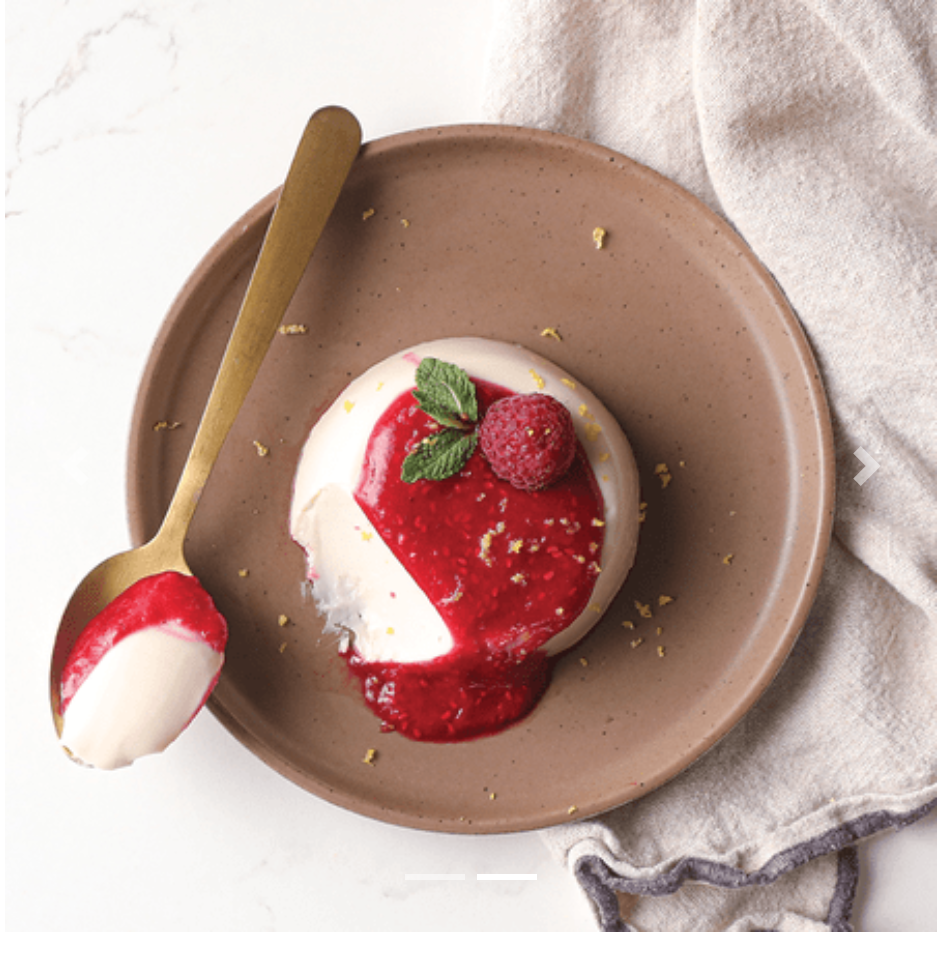
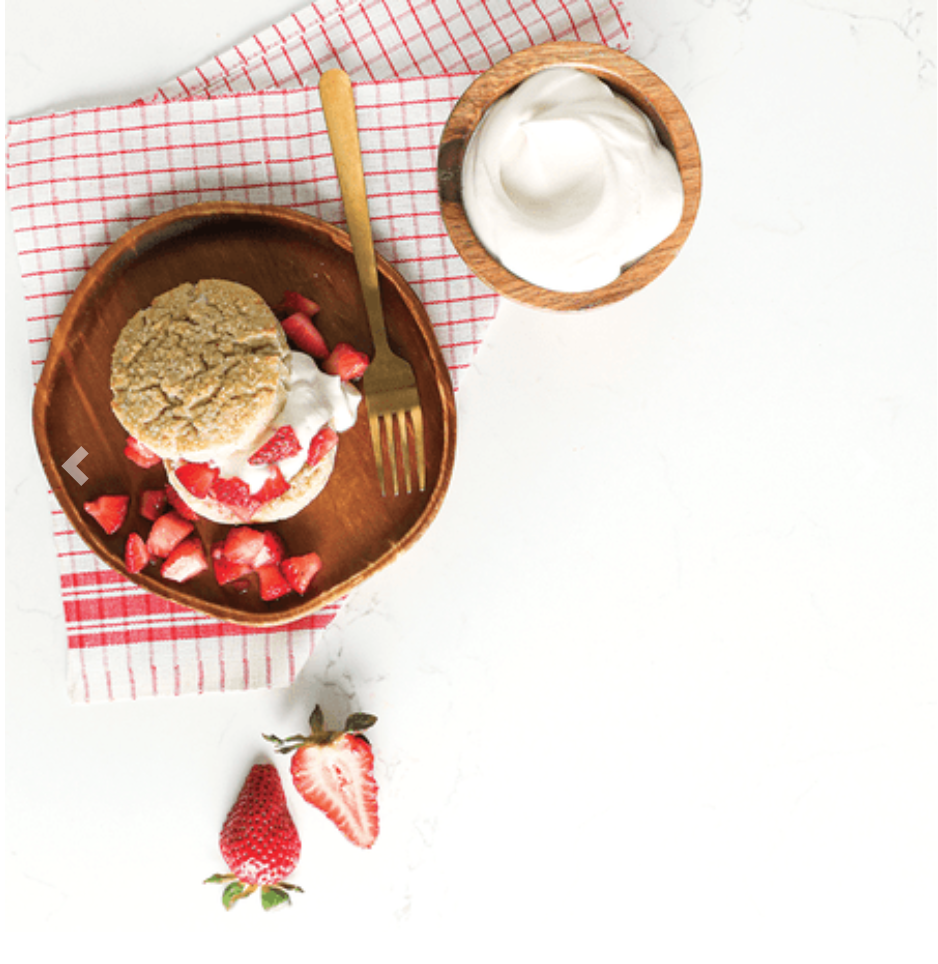

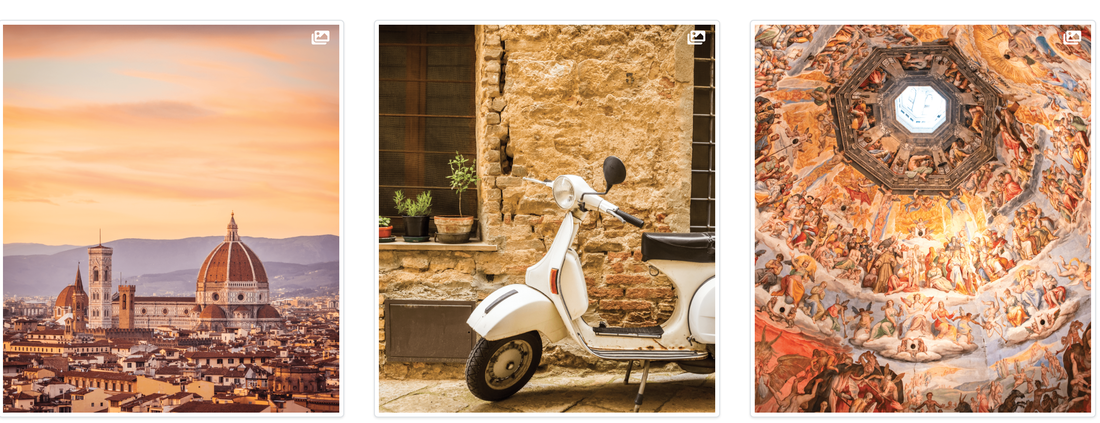
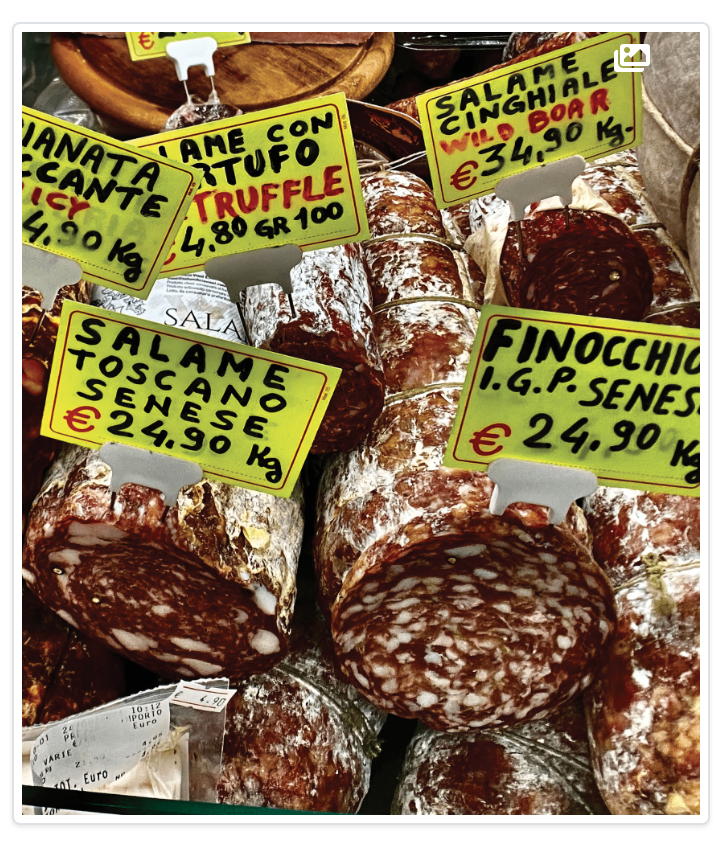
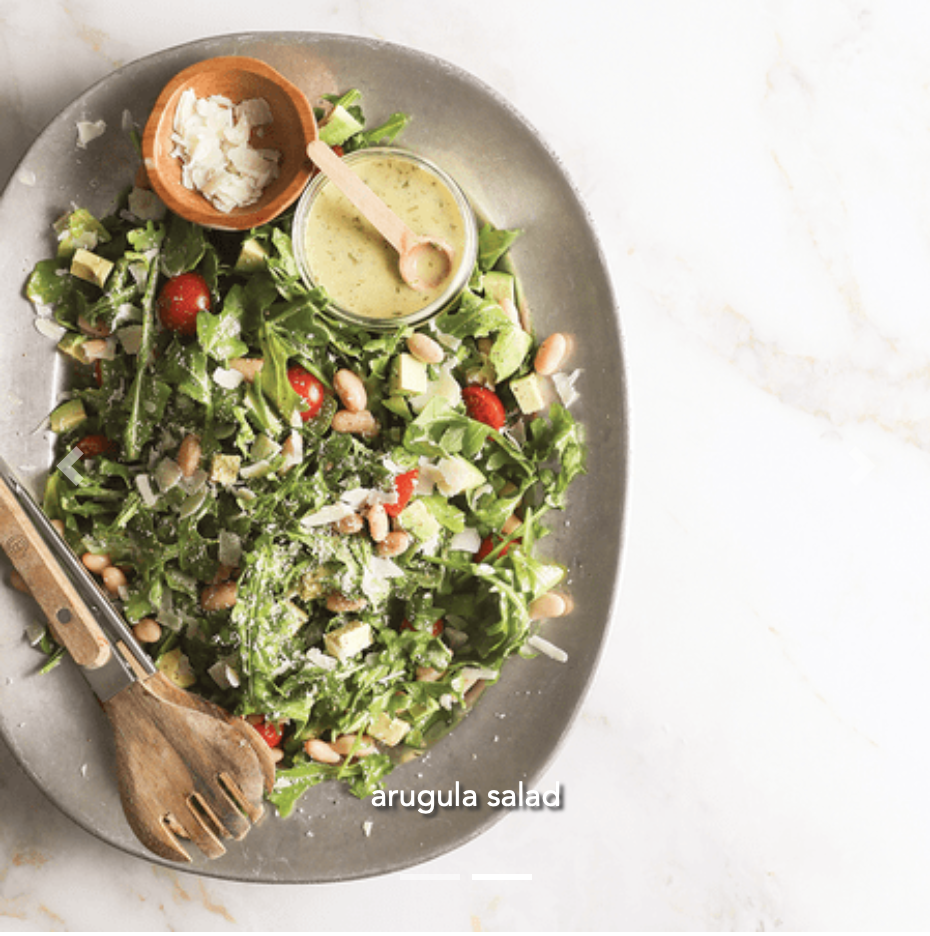
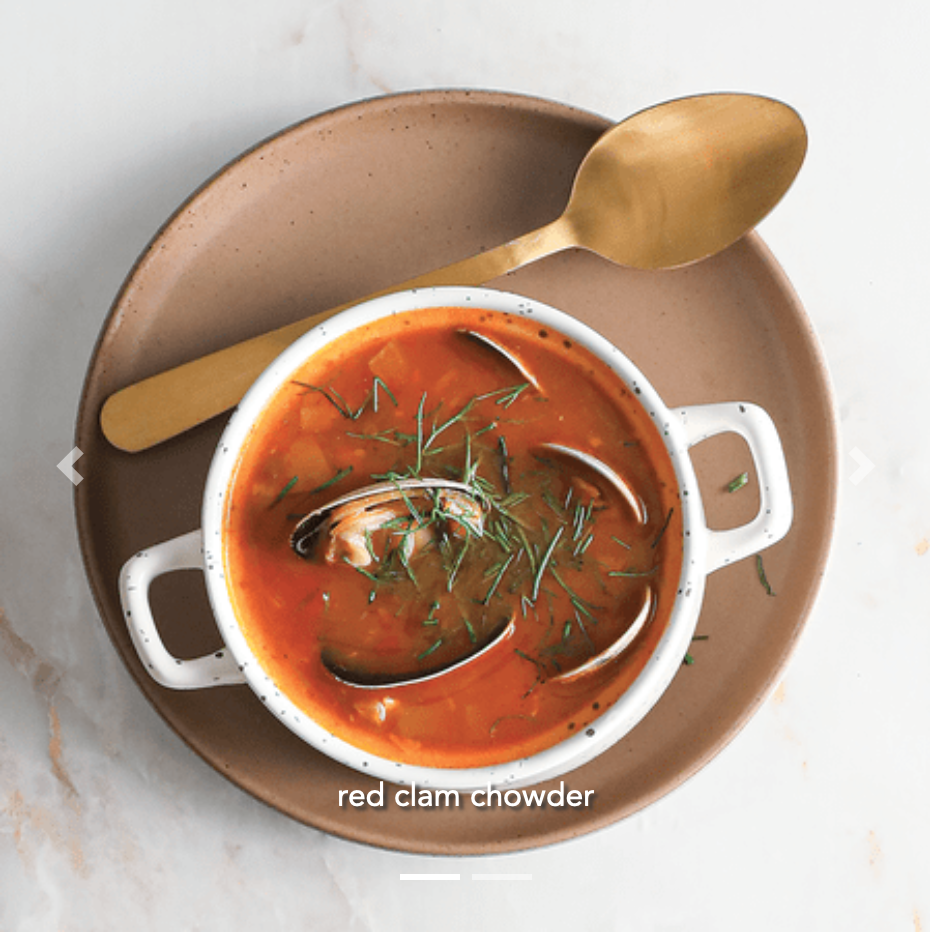
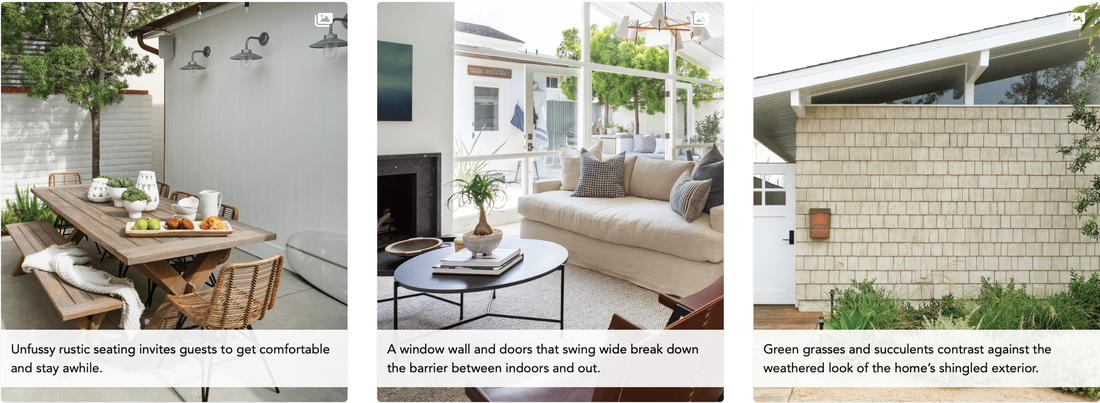

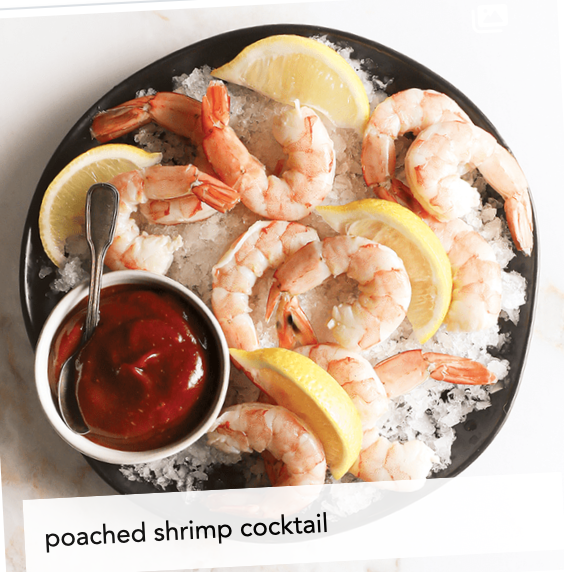
 RSS Feed
RSS Feed